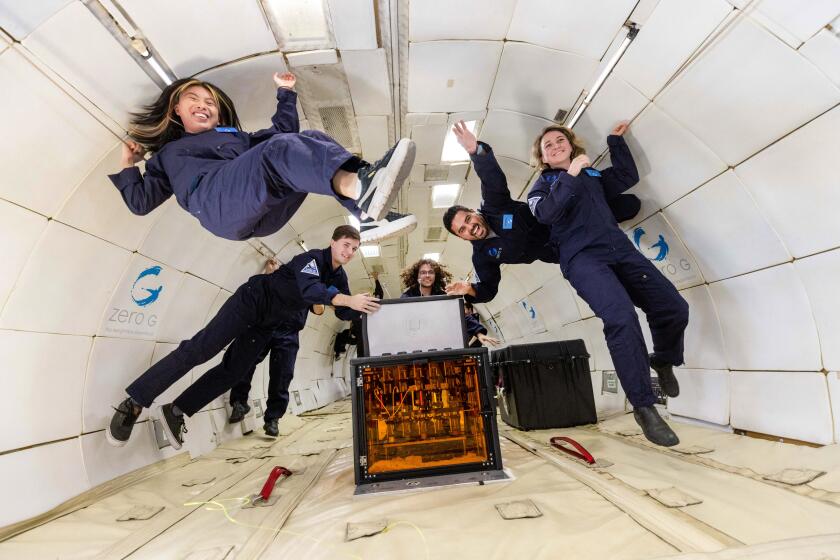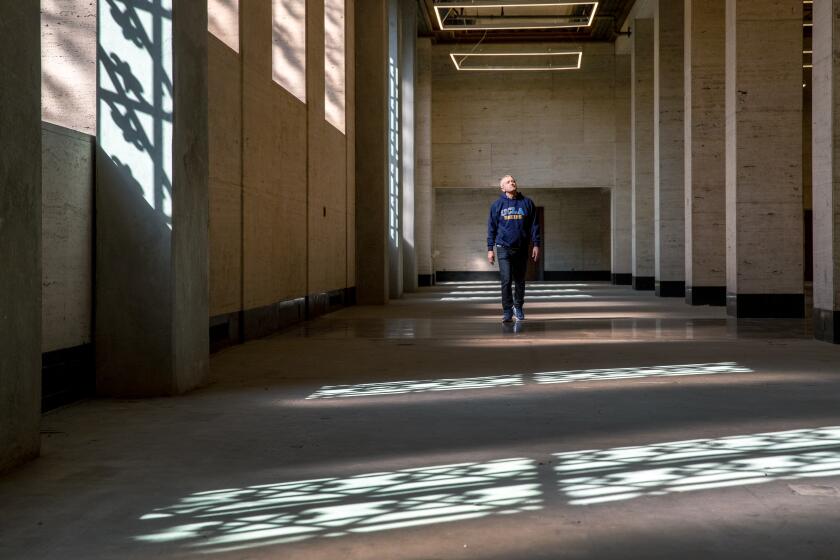UC enrolls record number of California undergrads in fall 2023, cuts out-of-state students

The University of California enrolled a record number of California undergraduates in fall 2023, reducing the number of students from other states and countries as it met public and political demands to give more of the system’s highly sought-after seats to state residents.
California undergraduate students climbed to 194,571, or 83.4% of the enrolled fall class last year, according to UC data released Friday. That included 42,058 first-year students, a 5% increase over fall 2022, with higher numbers at eight of the nine undergraduate campuses. UC San Diego enrolled the largest number of California first-year students — 5,547 — while UC Irvine and UC Santa Cruz saw the biggest growth of state students, each adding more than 500 students to their fall 2023 first-year class.
Out-of-state and international students fell to their smallest number since fall 2017, now making up 16.5% of undergraduates, compared with 17.4% the previous year.
UC increased the number of enrolled students across most ethnic and racial categories. Asian Americans made up 36.3% of undergraduates in fall 2023, followed by Latinos at 26.2%, white students at 20.3%, Black students at 4.6%, American Indians at 0.6% and Pacific Islanders at 0.2%. The U.S. Supreme Court ruling banning affirmative action in college admissions last year did not affect UC; California law has long prevented the use of race in public education, employment and contracting.
“We are as large as we’ve ever been; we’ve provided greater access across the board,” said Pamela Brown, UC vice president of institutional research and academic planning. “It’s helped us expand the diversity of our students.”
UC began enrolling more nonresident students to help offset major state funding cuts after the Great Recession. But that triggered a public outcry from Californians upset that they paid taxes to support the university system while their children were often rejected from their campuses of choice.
As a result, elected officials began tying UC’s state funding to expanded California student enrollment; UC President Michael V. Drake subsequently unveiled a plan to add more than 20,000 state resident students by 2030 — and possibly as many as 33,000, the equivalent of a new campus, if resources are available.
UC Berkeley has announced plans to open a 36-acre space center at NASA Ames in Silicon Valley to create new opportunities in a fast-growing field.
In a notable development, the public university system stopped a five-year slide in the number of low-income undergraduates. The number of undergraduates on federal Pell Grants rose to 77,487 in fall 2023 — an increase of more than 840 students over the previous year.
Rising financial challenges, including increasing housing and living costs, were leading more students eligible for UC admission to decline admission for less costly alternatives, including community college. The trend had deepened concerns throughout UC that some of the California’s poorest students might be missing out on the system’s top-notch education — and the opportunity to be launched into the highest echelons of wage earners who help the future state economy.
Drake has launched a “debt-free path” program to provide students with enough grants and work-study opportunities to cover the cost of college without loans. UC officials are phasing in the program, with plans to offer it to one-quarter of incoming students in fall 2023 and all undergraduates by 2030.
Individual campuses also have launched their own efforts. UCLA, for instance, unveiled a program in April, funded by a $15-million gift by California real estate investor Peter Merlone, that will enable the campus to award scholarships totaling about $20,000 over four years to about 700 students beginning in 2024.
Gary Clark, UCLA associate vice chancellor of enrollment management, said such financial aid has helped the campus move toward its goal of reducing and potentially eliminating the burden of student debt. UCLA enrolled 423 more Pell Grant recipients in fall 2023 than the previous year.
Clark also credited another systemwide financial aid program for helping UCLA more than double the number of Native American first-year California students from 22 to 56 last fall. In 2022, Drake unveiled the Native American Opportunity Plan that provides grants and scholarships to cover tuition and student service fees systemwide for California students from federally recognized Native American tribes. Overall, UCLA enrolled 101 new first-year and transfer Native American students, up from 67 in fall 2022.
Asian Americans made up 36.8% of UCLA’s first-year California students, followed by Latinos at 28.7%, white students at 22% and Black students at 7.7%.
The Westwood campus, which draws more applications than any other in the nation, also increased the number of both California first-year and transfer students. Clark said he noticed some “positive rebounding” among community college students who are accepting admission offers after significant declines in transfer applicants across the UC system. UCLA enrolled the largest number of state resident students from the California Community Colleges system — 3,206 — among UC undergraduate campuses.
UCLA announced plans to expand in downtown Los Angeles with the purchase of the historic Trust Building for satellite classes, a move to widen access at the nation’s most popular university and help revitalize the city’s historic core.
“We were happy we achieved our enrollment targets,” Clark said. “They were ambitious.”
Jim Rawlins, UC San Diego associate vice chancellor of enrollment management, said that stepped-up outreach and initiatives helped his campus enroll more California first-year and transfer students. San Diego extended the deadline for transfer applicants, offered admission to more students and received UC funding to hire two additional admission officers to spend time in community colleges to help potential transfer students understand the process, including preparation for their desired majors and financial aid.
The campus, which has been on a building spree, also was able to hold its admitted student day in a new state-of-the-art amphitheater — which Rawlins credited with helping stir excitement to commit to UC San Diego. In addition, the campus opened what it named Eighth College last fall, a living and learning community focused on interdisciplinary approaches to solving such global challenges as structural racism, economic disparities, climate disruption, and health and well-being.
UC Irvine also significantly increased its California new undergraduate student enrollment, growing by 844 students in fall 2023 over the previous year. UC Santa Cruz increased its first-year California class by 507 students, though the number of transfer students fell.
Graduate student enrollment, however, decreased in both master’s and doctoral programs. Academic doctoral students declined by 440 to 27,489 in fall 2023 from 27,929 the previous year. Several campuses had said they would be more cautious about adding doctoral students until they could better assess the impact of higher labor costs under a new contract with academic workers approved in late 2022.
More to Read
Sign up for Essential California
The most important California stories and recommendations in your inbox every morning.
You may occasionally receive promotional content from the Los Angeles Times.












